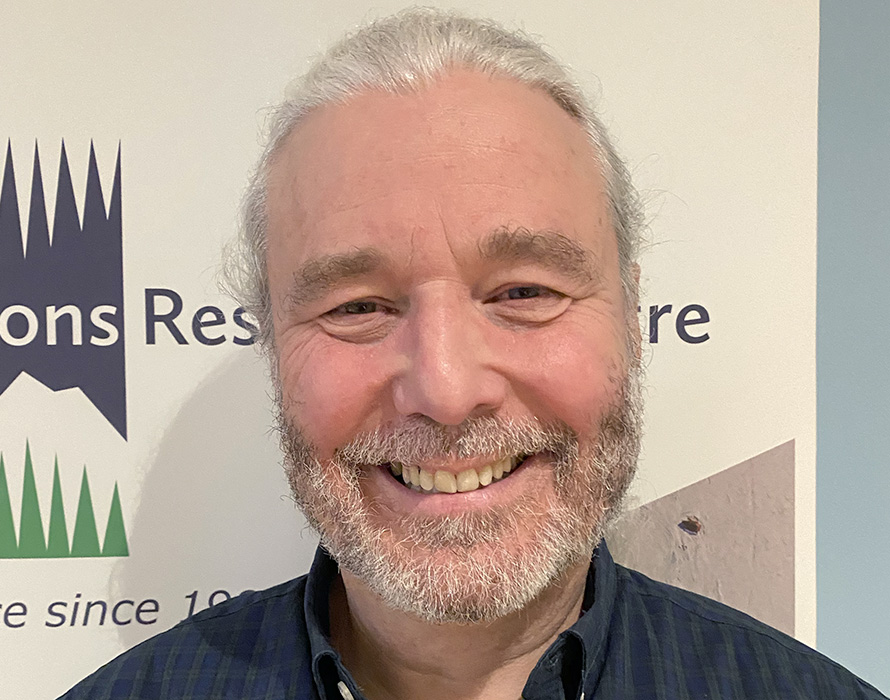We use cookies on this site to enhance your experience.
By selecting “Accept” and continuing to use this website, you consent to the use of cookies.
Search for academic programs, residence, tours and events and more.
May 15, 2024
Print | PDFStacey Hannem, a professor in the Department of Criminology, and William Quinton, a professor of Geography and Environmental Studies, have been named Wilfrid Laurier University’s University Research Professors (URP) for 2024-25. The annual internal award recognizes excellence and leadership in research and provides time and funding for the winners to complete a major research project.
Hannem’s research program focuses on structural stigma and marginalization, while Quinton studies the effects of climate change on hydrological systems in Canada’s North.
“Congratulations to Dr. Hannem and Dr. Quinton, both leading experts in their fields,” says Jonathan Newman, vice-president: research. “We are proud to celebrate and invest in world-class research here at Laurier.”

Hannem has been teaching at Laurier’s Brantford campus since 2009, where she supervises master’s and undergraduate researchers. Her research examines the lived experiences of marginalized people, including sex workers and families affected by incarceration, analyzing how they are disenfranchised by structural and institutional forces.
“I always hope that my work will help improve someone else’s experience of the world,” says Hannem. “Whether it’s contributing to better laws and policies or shifting the cultural conversation to include the voices of people who have been ignored, I want my research to help make the world a better place, however modest my contributions.”
Hannem is globally recognized for her research in the field of stigma studies, dedicated to understanding and mitigating the harmful effects of stigma. She developed “structural stigma,” a concept that moves beyond traditional understandings of symbolic stigma or negative beliefs about an individual, taking into consideration how institutional discourses and stereotypes work to marginalize entire groups of people. Hannem is currently completing an international comparative study of sex work laws and studying women’s experiences of risk and safety in the heavy metal music scene.
Throughout her career, Hannem has authored or co-authored numerous peer-reviewed journal articles, book chapters, government briefing notes and opinion essays. She has been called four times to give parliamentary testimony on criminal justice legislation and policy. The latest of her three books, 2022’s Defining Sexual Misconduct: Power, Media and #MeToo, examined 40 years of newspaper reporting to track the meaning of sexual misconduct across a shifting social landscape. Hannem and her co-author, Christopher Schneider, were recently awarded the Distinguished Book Award from the Midwest Sociological Society.
With her URP research grant, Hannem and her colleague, Ania Theuer, will launch a new project examining the experiences of survivors of sexual and domestic violence perpetrated by police officers. She says she is “deeply humbled and honoured to be selected by colleagues for this award.”
“There is so much outstanding research happening at Laurier and so many folks doing good work that to be recognized in this way is truly a highlight of my career,” says Hannem.

Quinton, the Laurier Research Chair in Cold Regions Hydrology, is dedicated to developing new knowledge, predictive tools and adaptation strategies for decision-makers and First Nations confronting the effects of climate change in the Northwest Territories. He participated in the formation of Laurier’s longstanding research partnership with the territorial government.
Rapid, widespread permafrost thaw has changed land and water resources and disrupted local livelihoods throughout the boreal region of the Northwest Territories. Quinton has been studying these hydrological and land cover changes at the Scotty Creek Research Station since he founded it in the 1990s, establishing a long-term data record for the region. The uniquely comprehensive data set is used by Quinton and colleagues to test and refine their understanding of ecosystems and forecast the implications of ongoing climate warming.
At Scotty Creek, Quinton closely collaborates with the Łíídlįį Kúú First Nation, which has taken over leadership. It is now the first Indigenous-led research station in Canada. Together, they initiated an environmental Guardian group and have involved high school students and other community members in research programming. Quinton has also served as scientific advisor to the Dehcho First Nations since 2018 and co-founded the Dehcho Collaborative on Permafrost.
Quinton has hosted dozens of international academics and Laurier student researchers at Scotty Creek over the years, providing mentorship and experiential learning opportunities. Research teams live and work together at the station. In addition to publishing their research in academic journals, Laurier students also engage with local communities through meetings, workshops and on-the-land camps to share their knowledge.
During his time at Laurier, Quinton has served as director of the Cold Regions Research Centre, a member of NASA’s Arctic Boreal Vulnerability Experiment Team, and both Canadian national delegate and chief international delegate for UNESCO’s Northern River Basins Working Group.
In the year ahead, Quinton is planning field courses for Dehcho-based high school students, educational events co-hosted by Indigenous communities and a documentary film production at Scotty Creek. He is working with municipalities across the Northwest Territories to protect infrastructure from thawing permafrost and leading a cluster of research projects examining the environmental impacts of a 2022 wildfire at Scotty Creek.
“I am honoured to be selected as University Research Professor,” says Quinton. “It takes many people to build a research program so, to me, this award is a welcome acknowledgement of the contributions of many dedicated students, researchers and Indigenous community members over many years.”